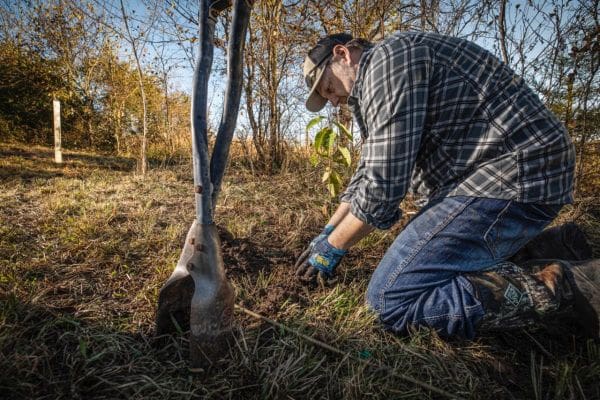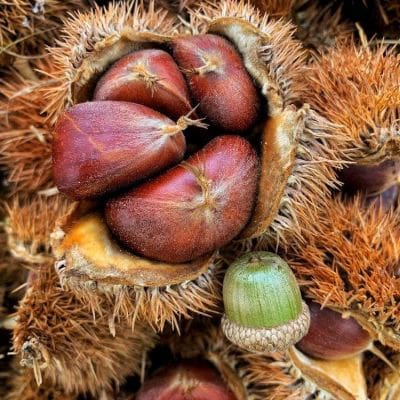Hunting and Fishing News & Blog Articles
Dunstan Chestnuts Versus Acorns

The chestnut tree is making a huge comeback as a food plot tree – it is field-proven that deer prefer chestnuts over acorns. And Chestnut Hill Outdoors, with its popular Dunstan Chestnut trees, has everything needed to provide chestnuts to the deer and wildlife.
trees, has everything needed to provide chestnuts to the deer and wildlife.
Chestnuts were the primary mast source for deer and other wildlife for thousands of years before the chestnut blight in the early 1900s. The blight left a nutritional gap in the American hardwood ecosystem, leading acorns to become a popular food source for deer as an alternative to chestnuts. However, this all changed with the introduction of Dr. Robert Dunstan’s chestnut, the Dunstan Chestnut.
Since deer are evolutionarily programmed to eat chestnuts, Dr. James Kroll, “Dr. Deer,” from the Whitetail Research Institute in Nacogdoches, Texas, conducted a study and found this to be true.
“Even though the wild deer at this location had never seen a chestnut in many generations, they got on the chestnuts within only an hour after we put them out,” Kroll said. “The deer ate the chestnuts 100:1 over the acorns! Chestnuts are deer’s preferred food.”
Chestnut Hill Outdoors offers the best-producing chestnut tree species – the Dunstan Chestnut. It produces very large, sweet-tasting chestnuts, which are like candy to deer. Acorns contain tannin, which is bitter-tasting. Dunstan chestnuts do not contain tannin and are, therefore, significantly sweeter. Chestnuts are also a great source of carbohydrates (40 percent) and protein (10 percent). Chestnut Hill Outdoors selected the Dunstan Chestnut tree for its blight resistance, its ability to bear chestnuts in only three to four years, and its ability to produce annual, heavy crops of chestnuts, unlike oak trees that can skip years of producing acorns.
Chestnut Hill Outdoors has many packages to choose from. Many tree packages include the renowned Dunstan Chestnut, soft mast trees, oak trees, and various pollinators to establish a firm foundation for generations. Find appropriate environmental information for all trees on the Chestnut Hill Outdoors website to promote proper growth, production, and care.
Stop relying on those old acorn trees to lure in and keep deer on the property. Plant Chestnut Hill Outdoors’ Dunstan Chestnut trees and feel confident in providing what deer actually want.
About Chestnut Hill Outdoors
Chestnut Hill Outdoors is the best place to purchase food plot and deer attractant plants because they offer a large selection, their plants are specifically bred to attract deer, and they offer customers different-sized plants at different levels of growth. To ensure you receive the maximum benefit from their products, they also provide sound advice and instruction on proper planting and care. For more on Chestnut Hill Outdoors products and how to care for them, visit ChestnutHillOutdoors.com or call (855) 386-7826.
For more information, please visit
WWW.CHESTNUTHILLOUTDOORS.COM
The post Dunstan Chestnuts Versus Acorns appeared first on HuntingLife.com.
Copyright
© Hunting and Hunting Gear Reviews

